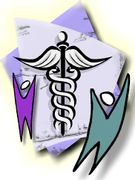
Diabetes is a condition that affects nearly 100 million American adults. As a chronic health issue, it takes a toll on your physical health. If you’ve recently been diagnosed with diabetes or prediabetes, you may have many questions about the disease. To help you learn more about it, here’s a brief guide to diabetes and how it may affect your lifestyle.
All You Need to Know About Diabetes
Type 1 Diabetes
Type 1 diabetes occurs when the pancreas doesn’t produce insulin properly. It is often times diagnosed at an earlier age and has a genetic predisposition. Diabetes Type 1 is often times characterized but sudden and severe onset of symptoms. Without Insulin, blood sugar levels grow higher and lead to a wide range of complications. People with type 1 diabetes experience weight loss, dehydration, and ketoacidosis, which causes the body to break down fat cells to use for fuel. Without proper treatment, this can lead to problems with your kidneys, eyes, and even your heart.
Type 2 Diabetes
People with type 2 diabetes typically experience normal insulin production by the pancreas. However, the cells have a problem using insulin, which leads to high blood sugar levels. Unlike type 1, type 2 can be brought on by excess weight. It is often times associated with high blood pressure, abdominal obesity and elevated cholesterol. Symptoms of type 2 include; excessive thirst, urination, hunger, fatigue, blurred vision, headaches, and weight loss.
How It’s Diagnosed
 There are diabetes tests that diagnose both type 1 and 2 of the condition. Blood tests determine your average blood sugar level over the course of three months, while urine testing helps identify the presence of ketones, which occur in type 1 diabetes.
There are diabetes tests that diagnose both type 1 and 2 of the condition. Blood tests determine your average blood sugar level over the course of three months, while urine testing helps identify the presence of ketones, which occur in type 1 diabetes.
Your doctor may schedule a screening based on certain criteria. For example, if you have a body mass index (BMI) greater than 25, lead a sedentary lifestyle, and have high blood pressure, testing is recommended. If you meet these criteria, schedule a physical with your doctor to check for the condition.
How It’s Treated
Diabetes treatments aim to keep blood sugar levels in check. This often involves taking insulin, especially with type 1. People with type 1 will also be counseled to eat a healthy diet and exercise on a regular basis.
With type 2, insulin therapy is a last resort. Instead, the patient is counseled to get their weight down to a healthy level, which also entails a balanced diet and exercise program. Medication can also be provided to regulate blood sugar, insulin resistance and prevent damaging physical effects.
Located in Anchorage, AK, Patients First Medical Clinic helps diagnose and manage type 1 and 2 diabetes. As a trusted primary clinic, they’re an essential resource for maintaining physical health and wellness, no matter what challenges you face. They offer wellness exams, urgent care, treatment of women’s health issues, and diagnostic testing. Learn more about their practice online or call (907) 333-7425 to schedule an appointment.
About the Business
Have a question? Ask the experts!
Send your question

